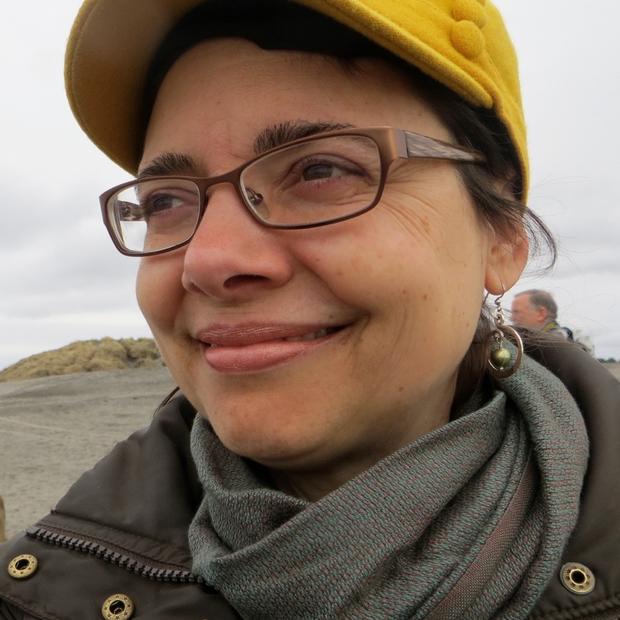In my psychotherapy practice, I often hear about an implacable force encountered by people from all walks of life. The force puts obstacles in their way, slowing them down until forward movement feels like a distant dream.
Against this force even breakthroughs are fleeting. This force always has a way of regrouping and coming back stronger than ever.
Still, sometimes a beautiful moment arrives: Someone shows up at my office smiling one of those unmistakable smiles of true relief.
“I found a way to get here where I don’t have to take Montlake!” my client will say. “I’m not sure I could find it again, but the traffic actually wasn’t bad until I hit Lake Washington Boulevard.”
The depressing thing about traffic in Seattle is that, like depression itself, it’s got every angle of escape covered. Due to Seattle’s wasp-waisted geography and lack of anything resembling a grid, you can’t dodge or weave around a traffic jam. Our hills are islands circled by swollen, clogged channels of asphalt.
Other water-sculpted cities have similar traffic problems — San Francisco, for example, ranks even higher than Seattle on the latest national TomTom Traffic Index. New York outranks us too, just barely.
But San Francisco and New York offer a viable alternative to driving: public transit with wait times in the range of 10 to 15 minutes. When riding a subway in New York, you’re free from the braking, swerving, intersection-jamming madness on the roads above ground. And you get where you’re going in half an hour, give or take.
In Seattle, transit is no escape. Wait times often stretch to half an hour or more and buses lumber behind impossible schedules or vanish en route. Our transit service, like our Puget Sound waterfront, is a tidal zone. Service continually erodes through wave upon wave of budget cuts.
On the other end, bicyclists brave potholes, steep hills that get slick in the rain, arterials with narrow (or absent) bike lanes and thick swarms of irritable drivers. The only Seattleites I know who seem happy about their commute live close enough to walk.
If Seattle were a person, how would we diagnose its apparent inability to move freely or get where it’s trying to go?
To review the symptoms:
1. A pervasive sense of being thwarted.
I don’t think I need to explain this one, at least not to anyone who’s had to choose between Denny and Mercer during commute hours.
2. A literal slowing down of movement, often to the point of paralysis.
You only have to look at the Seattle traffic map to find red and black zones throughout the day.
3. Depressed, anhedonic mood, with notable irritability.
Whether tailgating, lane-switching or hunkering down and driving defensively, Seattleites behind the wheel always appear to wish they were someplace else, away from the unbearable annoyance of other people.
4. Unstable motivation.
The saga of Bertha, the tunnel-boring machine, could stand as a metaphor for Seattle’s relationship with the hope of changing our traffic destiny: surges of grandiosity crashing into fresh bouts of hopelessness.
5. Difficulty making decisions.
Seattle’s notoriously circular policymaking has a name — “The Seattle Way” — and a Wikipedia page.
When it comes to traffic problems, Seattle’s diagnosis is clear. We’re depressed.
Since Sigmund Freud wrote his essay, “Mourning and Melancholia,” psychotherapists have tended to see depression as a sign of anger turned inward. And though the symptoms of depression do vary — enough to make researchers think that multiple syndromes get lumped together under the one name — problems with anger or aggression appear in all of them.
Seattle’s traffic problems, too, may be symptoms of a root anger.
The problem is, Seattleites don’t do anger well.
As drivers, we’re passive-aggressive. According to a recent poll taken by PEMCO Insurance, Seattle drivers overestimate their own politeness and blame other drivers for all the rude and aggressive behavior on the roads.
Why not admit that we’re aggressive behind the wheel? In some cities, like New York, drivers from all over the world enjoy shouting, honking and expertly cutting each other off like charioteers in a Cecil B. DeMille movie. Are Seattle drivers ashamed of their aggression?
As a city, we’re just not comfortable saying “no.” Every arterial, we believe, should be open to every possible user. If there’s not enough room for both a bike lane and cars, then paint bike symbols down the middle of the road, where the cars are. We avoid the conflict if not the collisions.
Of the 10 worst American cities for traffic congestion, five of them are on the West Coast (six, if you count Honolulu). Maybe we share an underlying, Western belief that it’s bad to trammel anyone’s freedom, even with sensible laws and infrastructure to regulate traffic flow.
Or maybe our Wild West history left us confused about aggression. We come to the West Coast with utopian ideals and a fervent desire to not be oppressed. We don’t boast about our ancestors’ highly aggressive ways of getting here.
My clients who move here from other parts of the country are often taken aback by the way Seattleites reject them for expressing themselves — in the way they always have on the East Coast or in the big cities of the Midwest. I tell them that here in Seattle, people get anxious about even mild signs of anger, like a slightly raised voice, or a calm text admitting disappointment over a last-minute cancellation.
But put us behind the wheel of a car and our aggressions come out, cramped and conflicted, but undeniably there.
“No, you first,” we silently fume at each other at the four-way stops where no one ever seems to remember the rules that the Department of Licensing taught us. “You first.”



